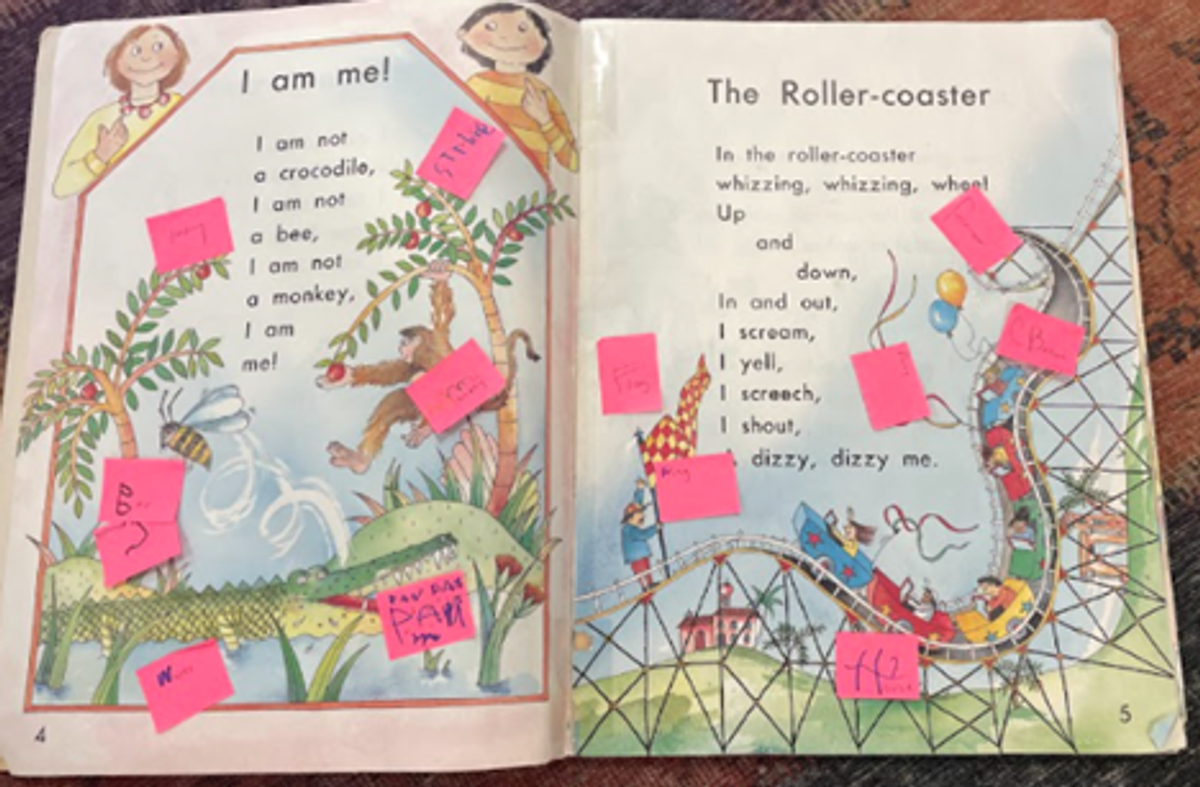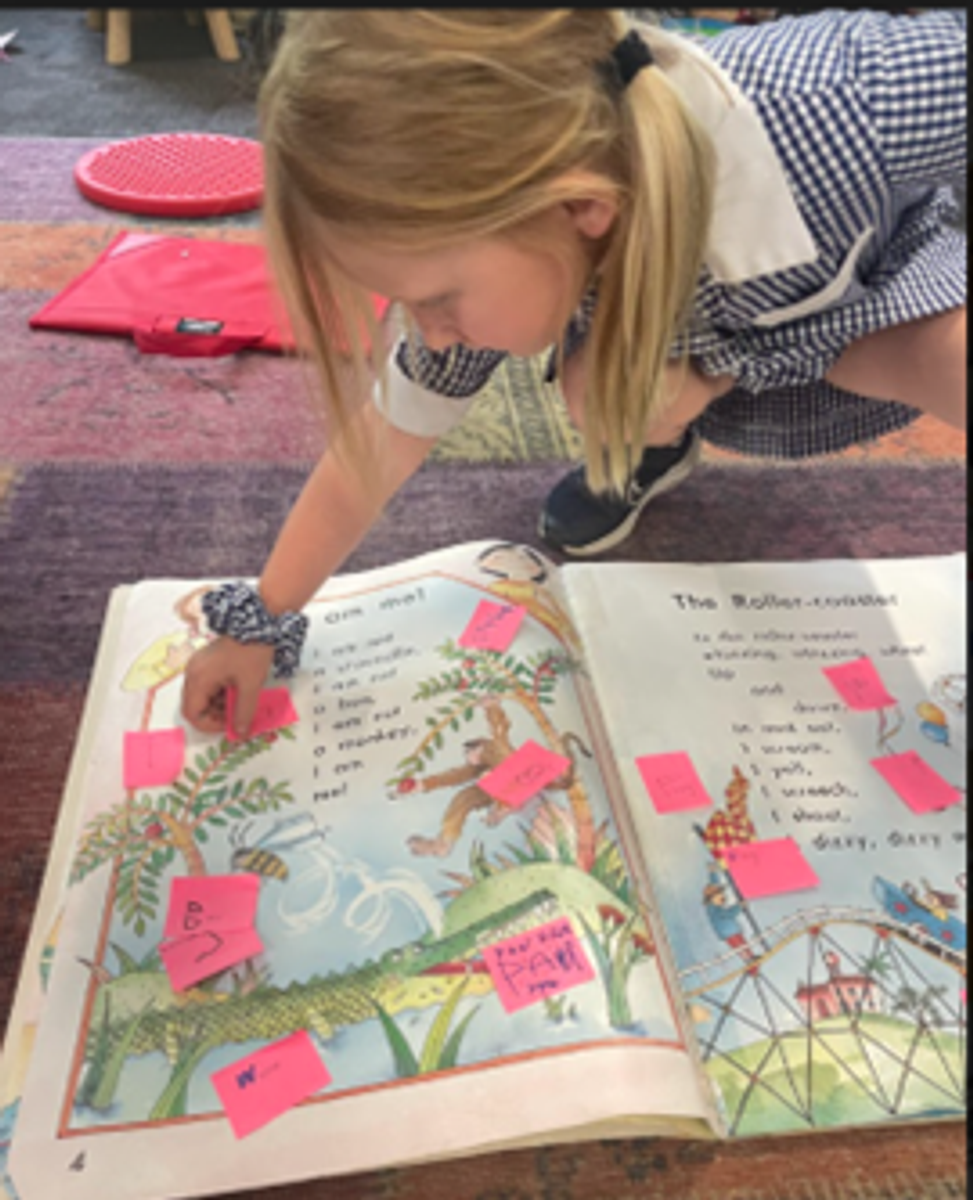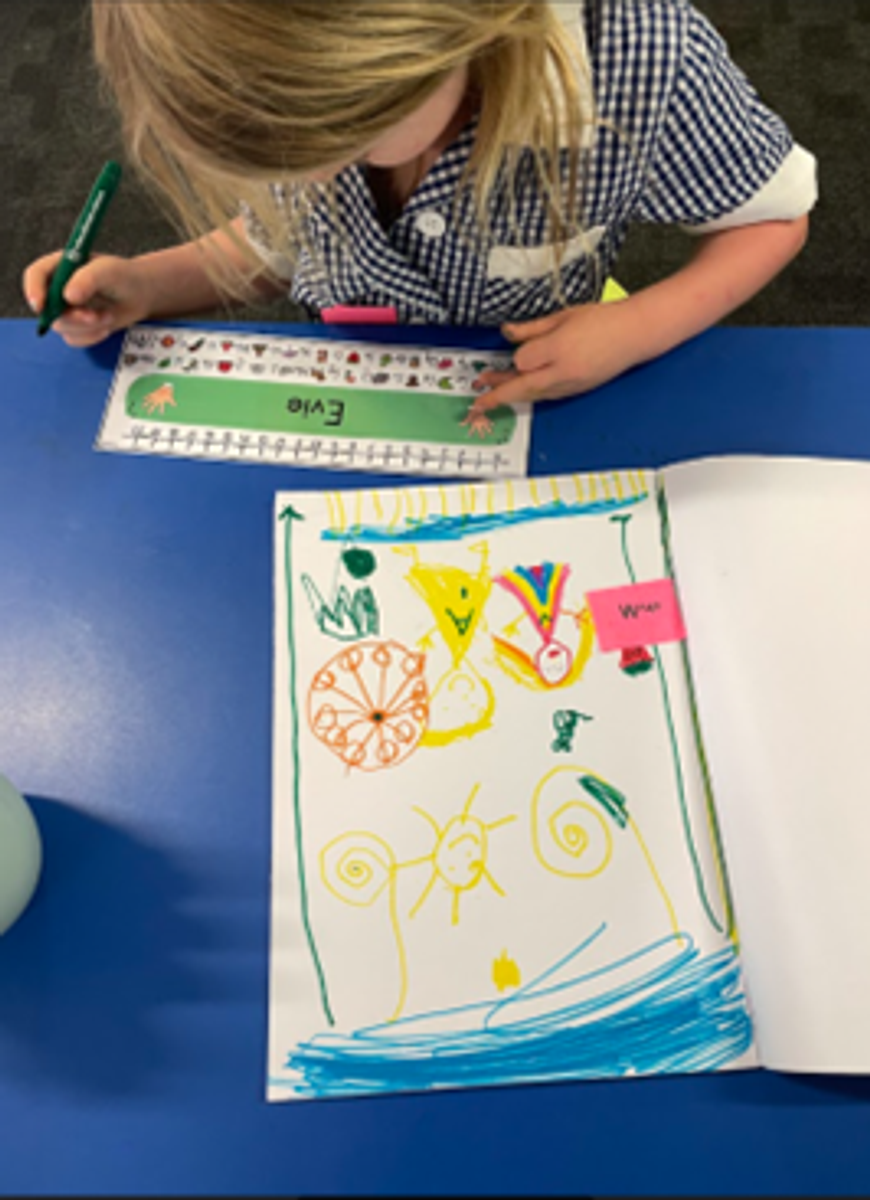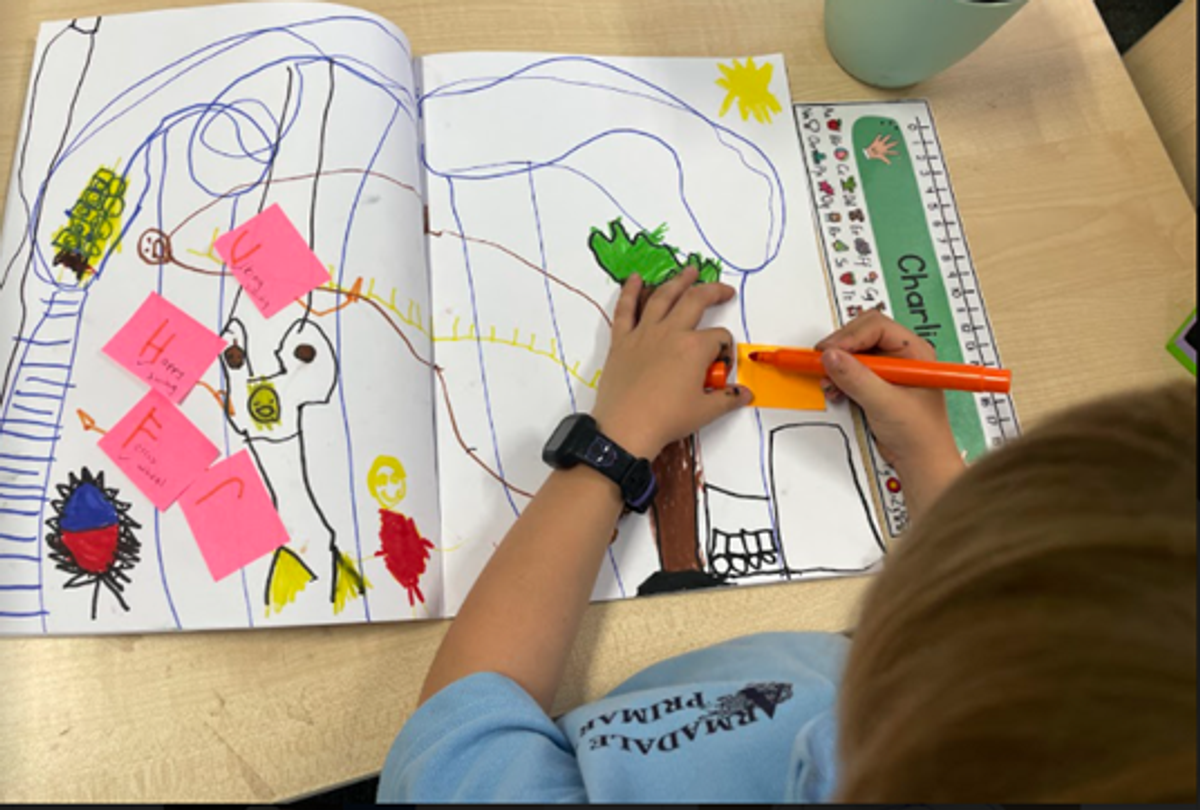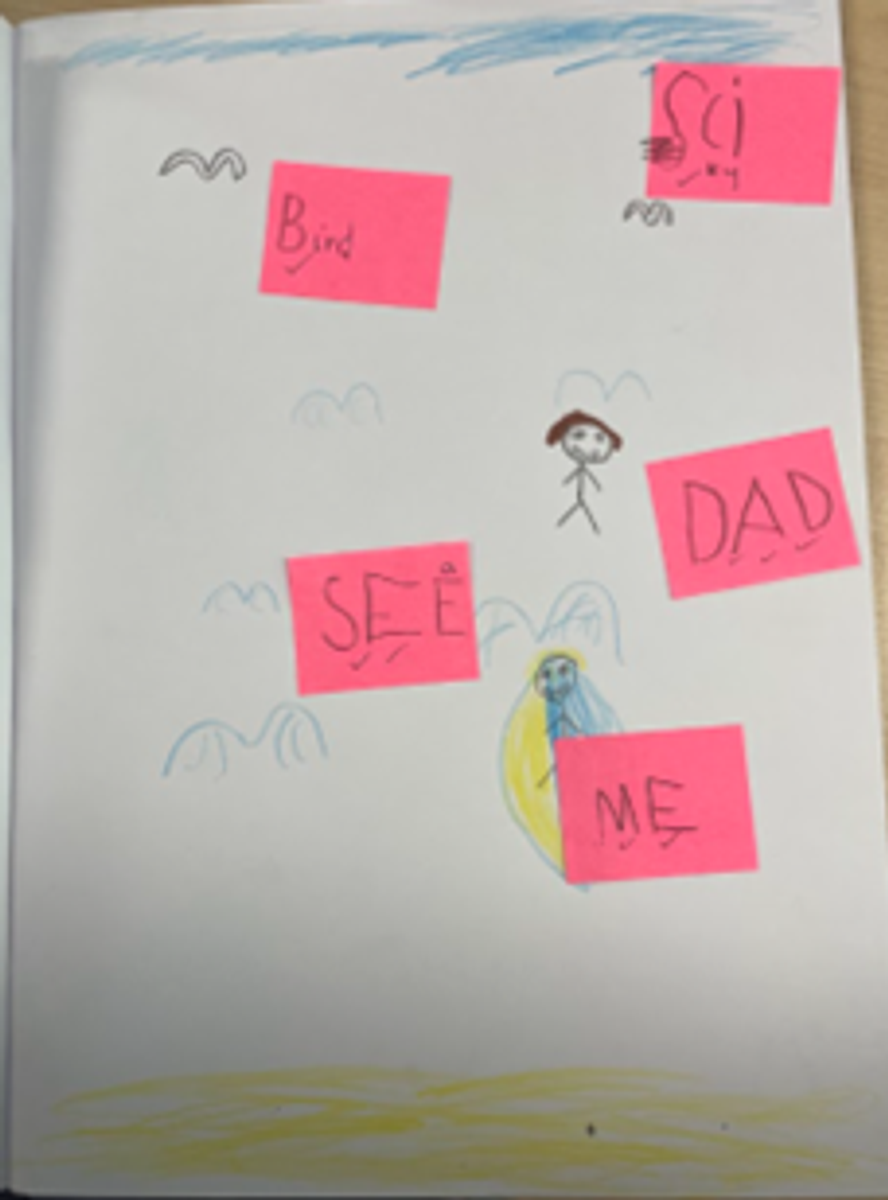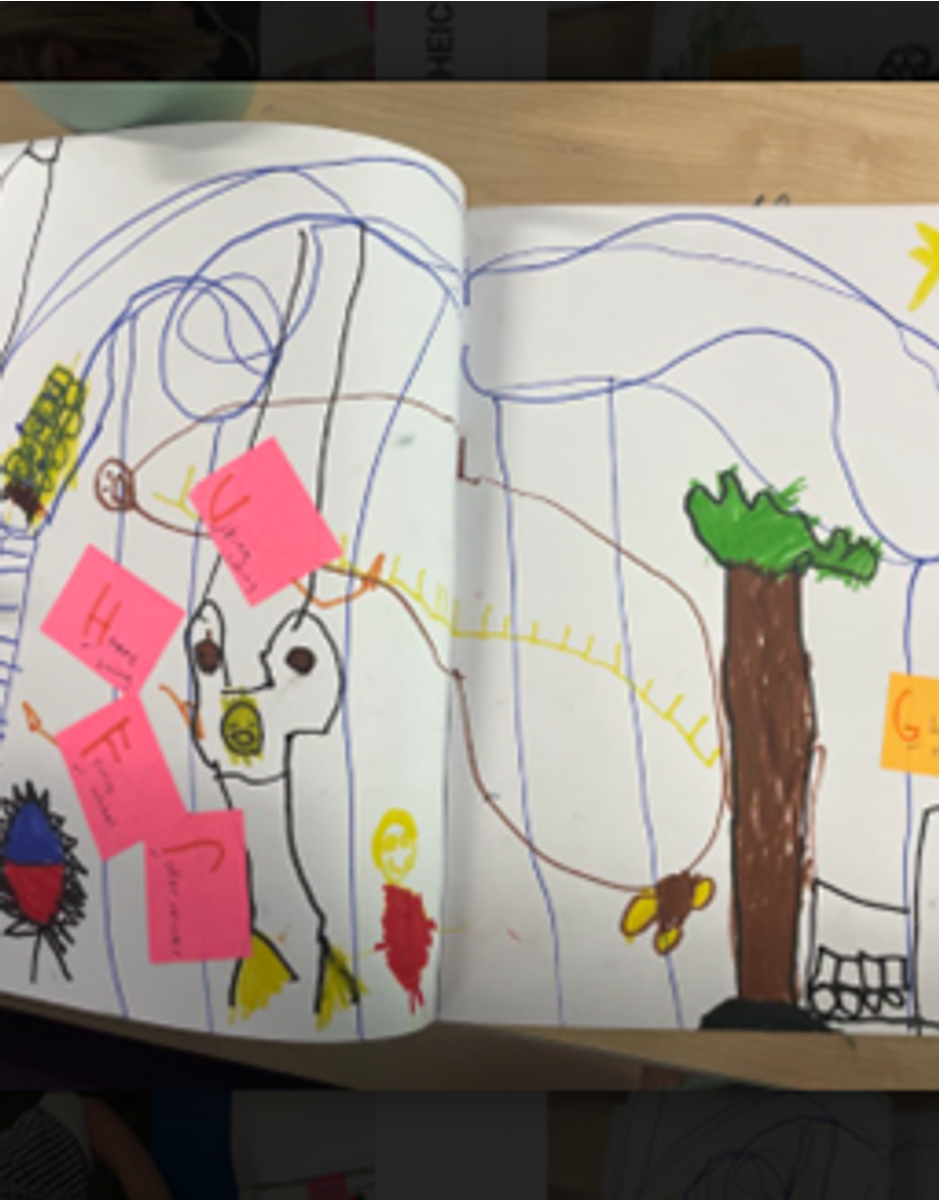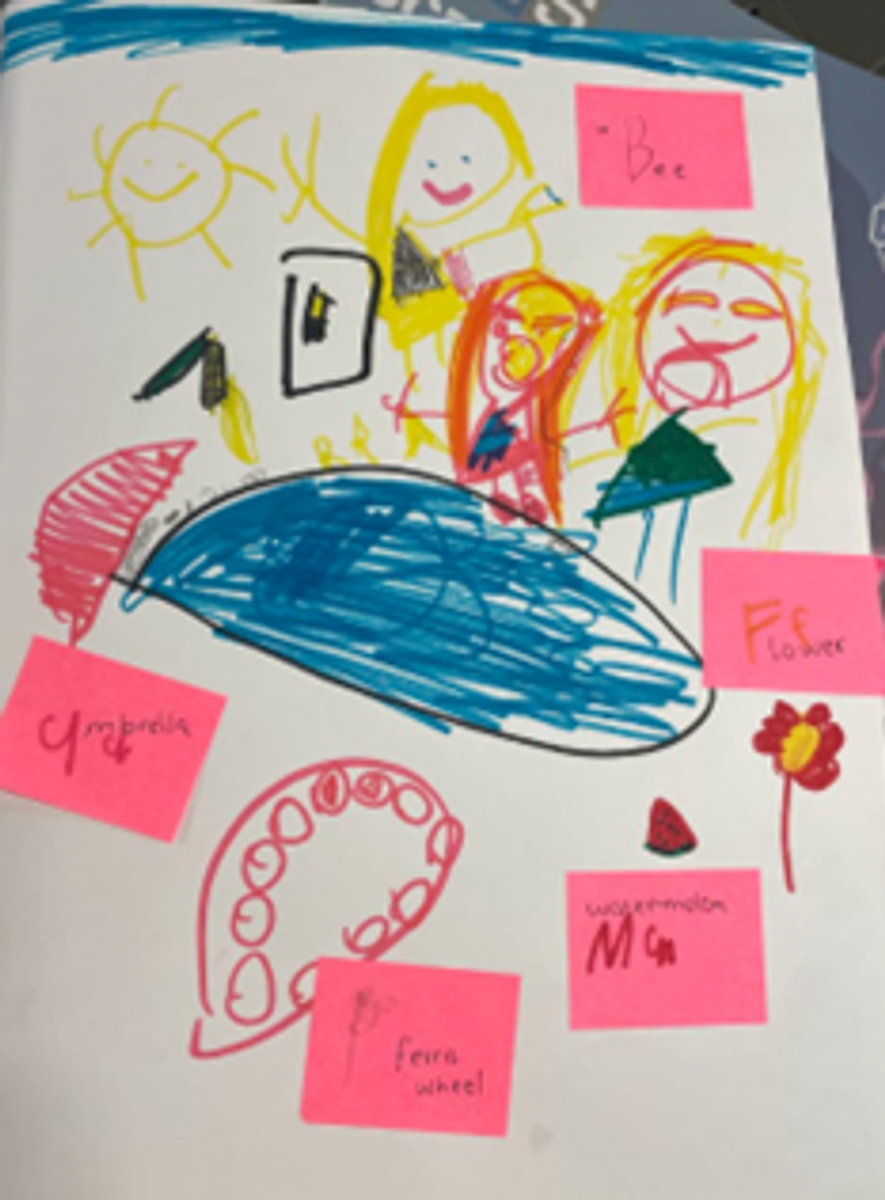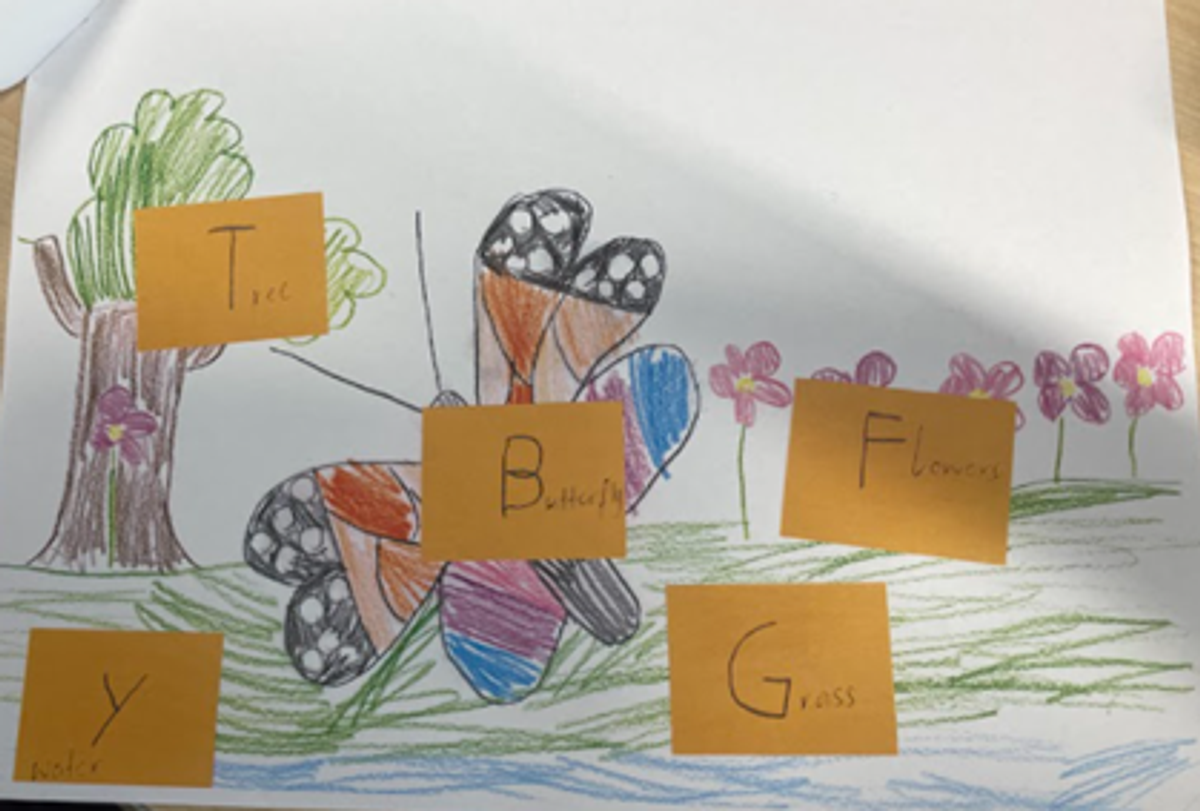Prep Bulletin
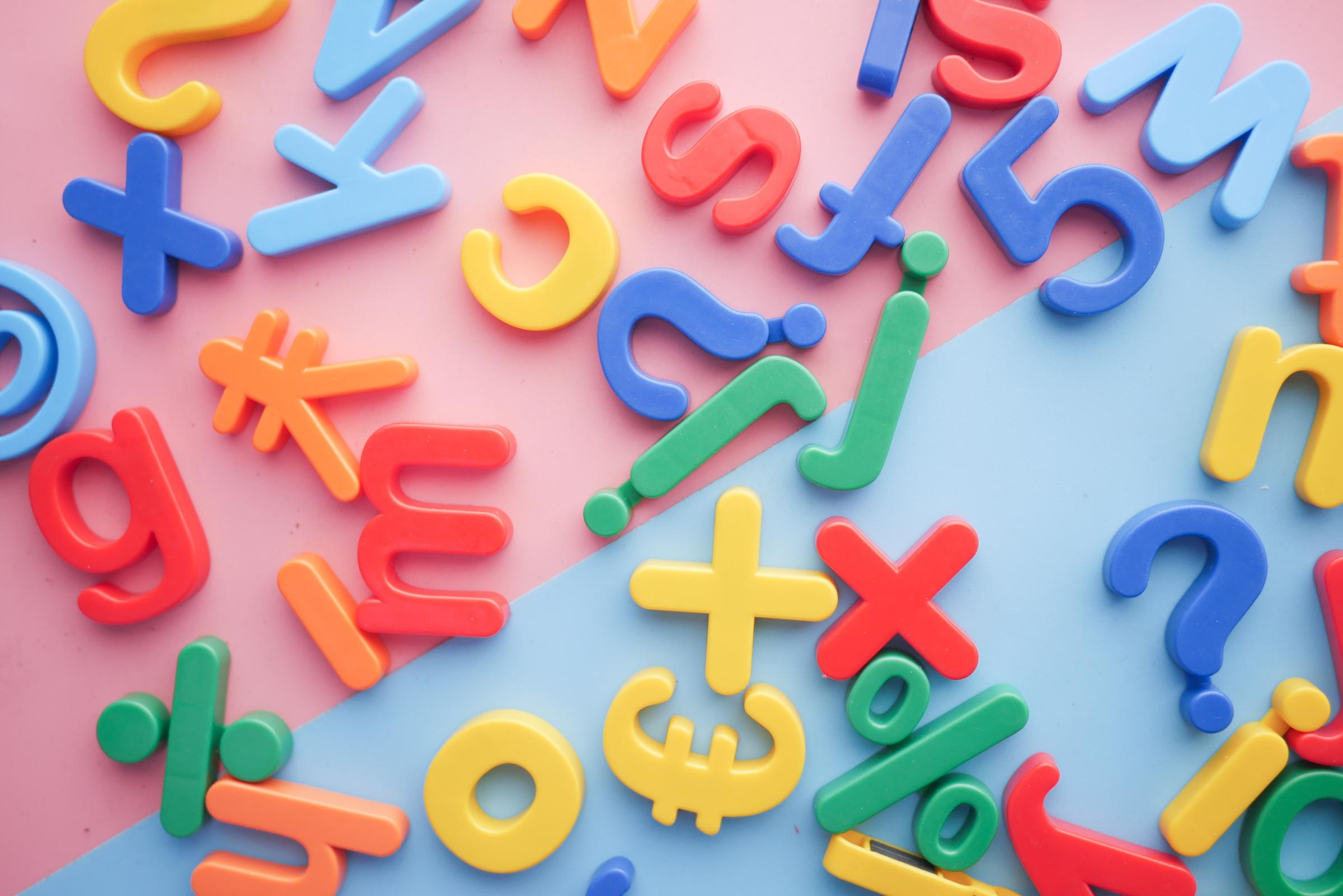
A snapshot into Writing
Learning intention: To use the details in our drawings to give us ideas for our writing.
Learning experience overview:
In this learning experience the students were exploring Pictorial writing through the concept of labelling.
Writers progress through stages or steps of writing. Pictorial writing is the beginning step in learning to write. It is a legitimate type of writing and one we need to teach young writers. If students think of details and draw them, they will think of details and write them.
The focus for this lesson, and the fourth step of Pictorial writing, is labelling their drawing. Labelling drawings provides a great scaffold to writing sentences.
- Drawing
- Close up details
- Real life colour details
- Setting details
- Labelling
- Writing Sentences
This learning experience was broken up into different parts (we do, I do, you do).
We do: As a class we read a book. Then selected a page and pointed to the details in the pictures. We labelled the details we could see on the page using a sticky note (see examples below).
I do: The teacher explicitly modelled drawing a detailed picture using close up details, real life colours and setting details. Then they labelled everything in their picture focusing on identifying the initial sound of the word.
You do: Students had a go at drawing their own detailed picture and adding labels. They were encouraged to focus on the initial sound of the word using their alphabet mat to support them.
Reflection:
Students discussed the following with their peers:
- How does labelling our drawings help readers?
- So the reader knows what the pictures are
- To explain the details in pictures
- How does labelling our drawings help us as writers?
- It helps us brainstorm words for our sentences
- It helps us add detail in our writing.
Learning Continuum:
Your child will come home with a copy of their work as well as the following learning continuum that highlights what skills their piece demonstrates and what they can do to take their learning further.
| Sounds | With support, students can write initial sounds | Independently, students can write initial sounds | Can write more than initial sounds (experimenting with middle and ending sounds) |
| Real life colour | Students colour with one colour | Student uses multiple colours | Student uses real life colour |
| Close up detail | With prompting, student is beginning to add close up detail to their drawings | Student is beginning to add close up detail to their drawings without prompting | Student adds close up details independently (drawings can be easily identified including how a character is feeling) |
| Setting details | With prompting, student is beginning to add setting detail to their drawings | Student is beginning to add setting detail to their drawings without prompting | Student adds setting details independently (what and where can be easily identified) |
Next lesson, students will use their labels to create sentences.
In this learning experience, students will work towards:
- Identifying and recording the initial sound in a word
- Pointing to and naming close up, colour and setting details in a picture.
- Using close up, colour and setting details in their picture to give them ideas for their writing
Examples of students work:
What you can do now to continue the learning at home from this experience:
When students create a drawing, ask them to add labels. They may even be able to use their labels to write a sentence. Encourage students to draw using close up and setting details and real life colours. When you’re out in the environment, have discussions with your child about what they can see around them.

